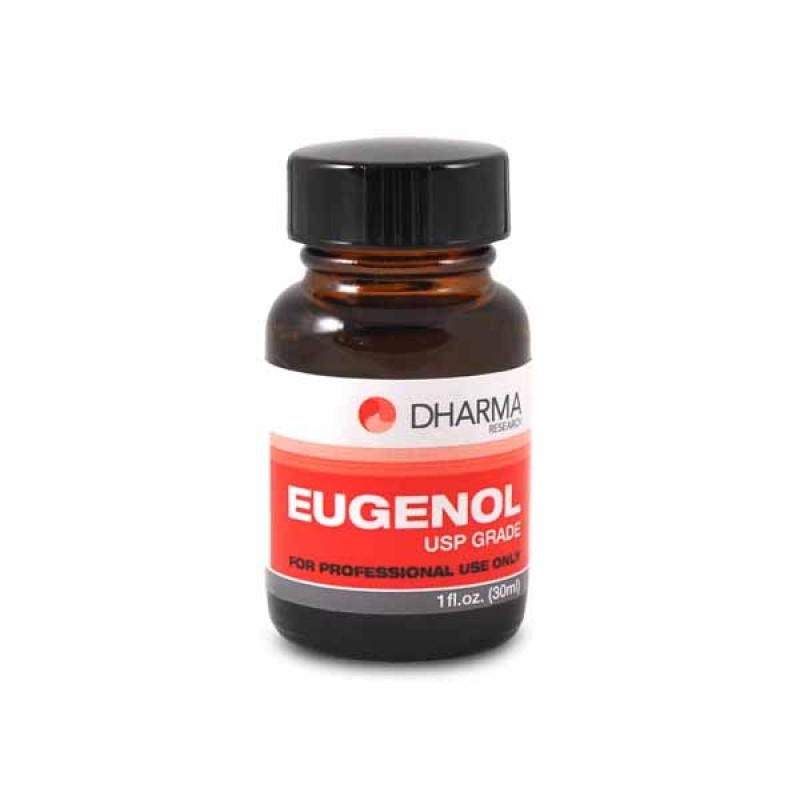ইউজেনল চা, মাংস, কেক, পারফিউম, ফ্লেভারিং এবং প্রয়োজনীয় তেলের গন্ধ বা সুগন্ধের উপাদান হিসাবে ব্যবহৃত হয়। এটি স্থানীয় অ্যান্টিসেপটিক এবং চেতনানাশক হিসাবেও ব্যবহৃত হয়। ইউজেনলকে জিঙ্ক অক্সাইডের সাথে একত্রিত করে জিঙ্ক অক্সাইড ইউজেনল তৈরি করা যেতে পারে যার দন্তচিকিৎসায় পুনরুদ্ধারকারী এবং প্রোস্টোডন্টিক প্রয়োগ রয়েছে।
ইউজেনল, যাকে ক্লোভ অয়েলও বলা হয়, এটি লবঙ্গ থেকে নিষ্কাশিত একটি সুগন্ধযুক্ত তেল যা খাবার এবং চায়ের স্বাদ হিসাবে ব্যাপকভাবে ব্যবহৃত হয় এবং একটি ভেষজ তেল হিসাবে ব্যবহৃত হয় যা দাঁতের ব্যথার চিকিত্সার জন্য ব্যবহৃত হয় এবং খুব কমই গ্যাস্ট্রোইনটেস্টাইনাল এবং শ্বাসযন্ত্রের অভিযোগের চিকিত্সার জন্য মৌখিকভাবে নেওয়া হয়।
Eugenol is present in the essential oil and extracted from many plants specifically the S. aromaticum (clove) and its antimicrobial activity is based on its ability to permeabilized the cell membrane and interact with proteins. The nonspecific permeabilization of the cytoplasmic membrane is evidenced with leakage of K+ and ATP from the cell by eugenol (Hemaiswarya and Doble, 2009).
Bacterial cell damage was also reported by eugenol on E. coli and B. thermosphacta cells (Di Pasqua et al., 2007). The antifungal activity of eugenol is linked with altered cell membrane and cell wall structure resulting in release of cell content (Bennis et al., 2004). de Paula et al. (2014) reported the effect of eugenol on the adherence properties and biofilm formation capacity of Candida dubiliensis and C. tropicalis isolated from the oral cavity of HIV infected patients.
All strains were able to form biofilms on different substrates. Eugenol showed inhibitory activity against planktonic and sessile cells of Candida spp. Biofilm cells showed no metabolic activity after 24 h of treatment. SEM studies revealed that eugenol significantly reduced the number of sessile cells on denture material surfaces. There was significant difference in cell surface hydrophobicity after exposure of planktonic cells to eugenol for 1 h. Eugenol also caused a reduction in adhesion of the isolates of Candida spp. to HEp-2 cells and to polystyrene. These findings corroborate its potential as an antifungal applied to inhibit the growth of the planktonic and biofilm formation on different surfaces.
Eugenol chemical structure is related to phenol. However, the toxicity does not include corrosive activities of phenol; ingestion results in vomiting, gastroenteritis, and secretion of mucin, and the resulting systemic toxicity is similar to phenol in some extent. There is no study demonstrating acute toxic effects of eugenol by occupational exposure. There are few studies in humans reported with accidental ingestion of eugenol; toxic effects were observed in liver, lung, and nervous system as discussed in mechanisms of toxicity. Overall, acute toxic effect of eugenol in mammals is low, and the US Environmental Protection Agency has classified eugenol as category 3; the oral LD50 value is >1930 mg kg−1 in rodents.
Signs of acute toxicity induced by high doses of eugenol were sloughing of gastric mucosa, capillary bleeding, and congestion of liver in canines, and gastritis and discoloration of liver in rats. The LD50/LC50 values of eugenol and relative toxicities for laboratory animals are listed in Table 1.

Login To Comment